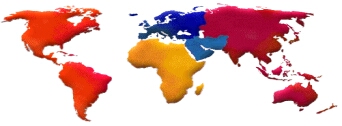 | |||
 |
KUMRU KİMYA
SANAYİ VE TİCARET LTD.ŞTİ. | ||

|
|
Kumru Kimya whose main purpose is customer satisfaction was established in 1972 and since that time it has been trading plastic raw materials. In this direction, it is trading with the most important petrochemistry manufacturers in all over the world particularly Europe, Far East and Asia. Kumru Kimya exports mainly Urea formaldehyde, melamine-formaldehyde and phenol-formaldehyde (Bakelite) moulding powder, glazing powder (lamalit), polyethylene (PE), polypropylene (PP), polyvinyl chloride (PVC), polystyrene (PS) and ABS raw materials.
1) UL94 Flammability/Flame Retardation Feature
All the thermoset plastic raw materials, urea formaldehyde moulding powder, melamine formaldehyde moulding powder and phenol formaldehyde moulding powder are in V0 category, which is the highest category in UL94 flammability test. Thanks to this feature, using the thermoset plastics in products (holder, switch, sockets, fuse junction boxes) in which there is electric current, and therefore which are likely to set fire, will increase the safety of the product and create an extra value for the manufacturers.
Flammability of polypropylene and nylon 6,66 (polyamide), which are the two raw materials often used in electric accessories, is evaluated in V2 category according to UL94 standard. Nylon 6 raw materials can reach V0 standard, which urea formaldehyde, melamine formaldehyde and phenol formaldehyde reach without additives, with glass fibre additive only by 30%. When it comes to the costs, thermoset plastics make especially the urea formaldehyde and melamine formaldehyde move ahead of glass fibre-reinforced nylon 6, which is an alternative raw material.
What is UL94 Flammability/Flame Retardation Standard?
UL94 is the name of the most common international standard which is applied by the company founded in the USA and providing consultancy about the safety certificate “Underwriters Laboratories” and which classifies the flame retardation of the plastic raw materials.
This Standard classifies the plastic raw materials according to how the final products, which are produced from these plastic raw materials and have different directions and thickness, burn.
According to the UL94 classification, there are three main flame retardation categories. Names of these categories and their requirements are below.
HB: Burning at downright sample. Burning rate must be lower than 76 mm/min.
V2: Burning at upright sample stops in 30 seconds. There can be burning particle drops.
V1: Burning at upright sample stops in 20 seconds. There can be particle drops as long as they don’t burn.
V0: Burning at upright sample stops in 10 seconds. There can be particle drops as long as they don’t burn.
2) Not Being Hygroscopic / Water-Absorbing and Not Requiring Firing
The word hygroscopic raw material includes pulling the water molecules around a raw material towards itself and keeping them permanently in it. This feature which can briefly be named ‘water absorption’ exists in every plastic raw material at a certain level. However, feature of water absorption in various plastic raw materials differ substantially.
Some of the plastic raw materials absorb the moisture (hygroscopic), whereas others don’t absorb the moisture which is naturally in the air and keep it on the surface (non-hygroscopic). This difference, which can firstly be seen unimportant, leads to difficulties in processing the plastic raw materials, deformities of the final products and losses of features (electrical resistivity, resistance to chemicals, resistance to heat etc.), if it is not taken into account during the production period.
In a former research related to processing the plastic raw materials, it was found that 80% of the problems related to processing the plastic raw materials resulted from the fact that the plastic raw materials weren’t dried properly. Although it is thought today that this proportion has decreased to 40% due to the awareness of the manufacturers, it is obvious that the water-absorption feature of the plastic raw materials is still an important problem which isn’t handled properly.
Water-absorption feature is mostly available in engineering plastics. PET, PC, ABS and PA (nylon 6 and nylon 66), which are in this category, are the plastic raw materials whose water-absorption features are at the highest level. Nylon 6 and nylon 66 raw materials used especially in the production of the electric accessories can absorb as much water as 9% of their own weights in environments with high moisture.
Hygroscopic plastic raw materials are generally processed by demoisturizing with the firing method in our country. For example, in order to demoisturize the nylon 6 raw material, it must be fired between 75C and 120C at least for three hours. This firing period leads to increases in costs due to the energy consumed and prevents the final product to reach the aimed quality, if the moisture is not eliminated through the firing method.
All of the urea formaldehyde, melamine formaldehyde and phenol formaldehyde plastics (Bakelite), which belong to the thermoset plastics category, are the non-hygroscopic plastic raw materials. Therefore, firing is not necessary before processing these raw materials. In this way, less energy is consumed during processing period and the risk of not reaching the aimed features is eliminated.